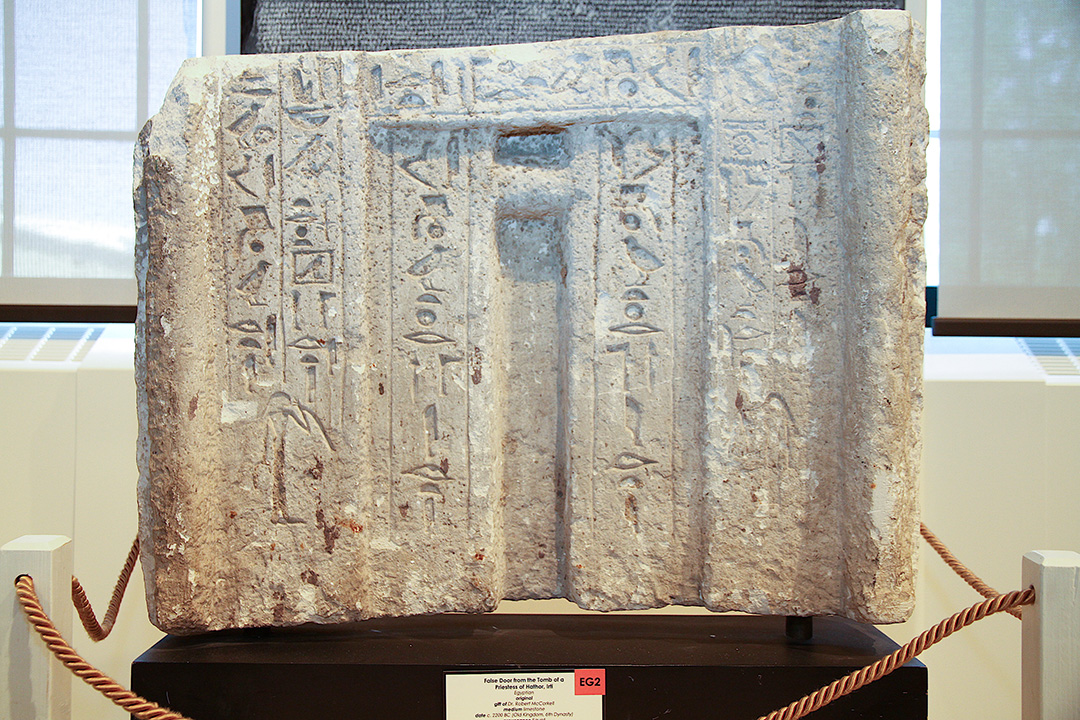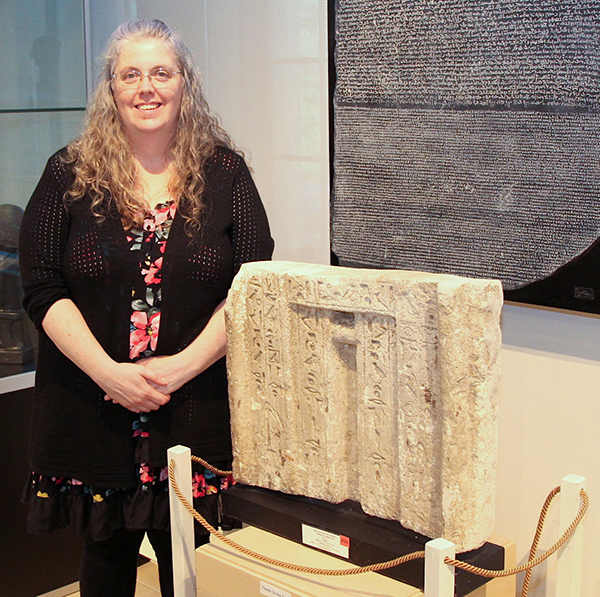
Uniquely USask: Exotic Egyptian false door
From a bronze bust sculpture of Hannibal that once belonged to Napoleon, to the largest collection of ancient glass in Western Canada, the University of Saskatchewan’s Museum of Antiquities is home to a treasure trove of rare relics and resplendent replicas.
By James Shewaga
For Dr. Tracene Harvey (PhD), the mystique of one unique artifact stands out above the rest. One of the prized pieces of the museum is an exquisite Egyptian false door dating back to the year 2200 BC, originally found in the tomb of Irti, a priestess of the Goddess Hathor.
“To stand in the presence of something that is over 4,000 years old and something that belonged to a priestess of an Egyptian goddess, is really a humbling experience,” said Harvey, the director/curator of USask’s Museum of Antiquities.
“It certainly is the show stopper and the fact that the hieroglyphs are still quite clear is really impressive. Everybody is attracted to this when they come into the museum.”
Donated in 1997 and certified by Sotheby’s auction house in London, England, the Egyptian artifact from the 6th Dynasty of the Old Kingdom is an original limestone relief, the lower portion of a false door measuring 48 by 65 centimetres, carved with hieroglyphic inscriptions.
“The ancient Egyptians believed that these false doors were a portal to the afterlife,” said Harvey. “The Egyptian belief is that when you died, you continued to live in the afterlife in very much the same way you did when you were alive.
“So that’s why when you find an Egyptian tomb, it is filled with all sorts of daily life things, so that the spirit of the dead can continue on with the comforts of home. They could come back to the tomb from the underworld and enjoy their favourite food, their favourite perfume, their favourite clothes. Sometimes their mummified pets were also in the tomb.”
Harvey would like to further examine the false door with the use of the Canadian Light Source synchrotron, which has been previously utilized to identify the source of materials and the quantities of precious metals in ancient coins in the museum’s collection.
“There are some scientific experiments that we would like to conduct, to further examine the encrustation and the molds and things that a piece acquires over time,” Harvey said. “There are questions about this piece that can be answered using science.”

